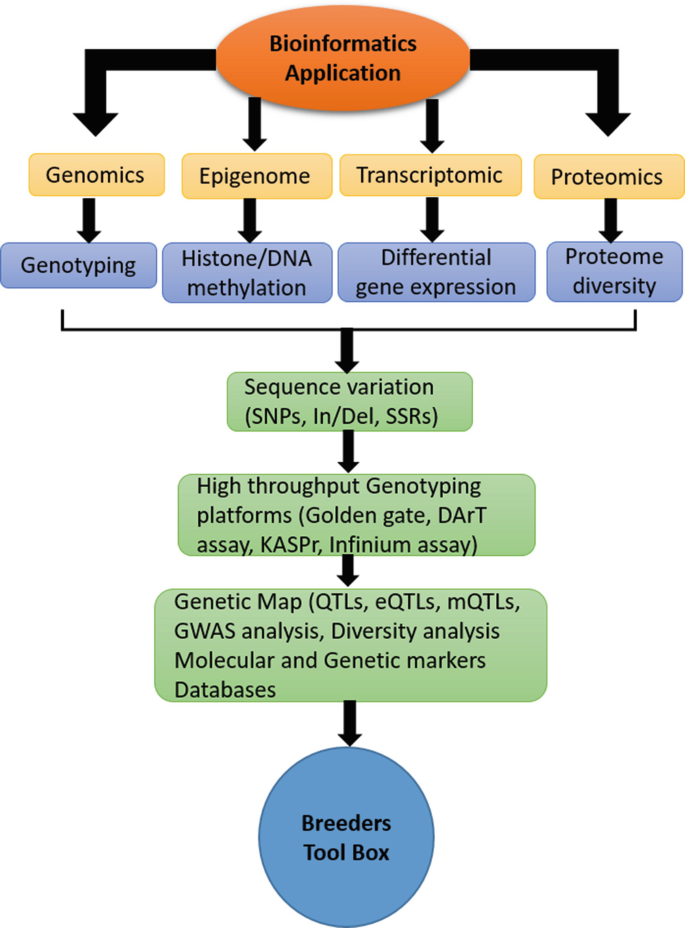Bioinformatics Tutor Can Be Fun For Everyone
Bioinformatics Tutor Can Be Fun For Everyone
Blog Article
How Bioinformatics Tutor can Save You Time, Stress, and Money.
Table of ContentsBioinformatics Tutor Fundamentals ExplainedBioinformatics Tutor Can Be Fun For AnyoneRumored Buzz on Bioinformatics TutorBioinformatics Tutor Can Be Fun For EveryoneGetting My Bioinformatics Tutor To Work
Of the total participants associated with the training, 80% were students from public higher education and learning organizations, while the staying 20% originated from private institutions. To qualify for a certification of engagement, students were needed to go to at the very least 90% of the total training hours. As a result of this demand, an outstanding 95% of the participants efficiently gotten their certifications, having not just satisfied the minimum attendance requirements but likewise finished all appointed activities throughout the training.
During the height of the COVID-19 pandemic, especially in between June and August 2020, the job group was charged with organizing specialized training in bioinformatics. This training was particularly focused on pupils from the study team Center for Research in Applied Computing at the Federal College of Pará (UFRA) The adjustment to remote learning platforms as a result of the pandemic created a possibility to discover brand-new mentor approaches and digital tools that improved both reach and effectiveness.
This program was designed to offer an easily accessible yet thorough introduction of Artificial Knowledge strategies, specifically as used in bioinformatics (Bioinformatics Tutor). This online style made it possible for participation from trainees throughout Brazil, many of whom might not have had the opportunity to attend in-person sessions.
Rumored Buzz on Bioinformatics Tutor
Around 50% of the total training hours were committed to useful activities where pupils built smart designs and applications in a variety of scientific domain names, consisting of genes, molecular biology, and ecological data evaluation. These systems enabled pupils to engage in real-time data adjustment, version training, and formula trial and error.
Sixty of them were associated with numerous greater education and learning organizations in the state of Pará, while the continuing to be twenty came from institutions located in five other Brazilian states. By introducing Artificial Intelligence in a useful and pertinent context, the initiative served to link the gap between theory and real-world application, providing students with a strong foundation for future research study or employment in the area.
The training initiative formed component of a more comprehensive academic outreach effort referred to as the Bioinformatics on the Road project. This project has, throughout the years, introduced dozens of trainees to the world of bioinformatics and computational biology. The events held under this umbrella effort have taken place throughout numerous areas and years, as look at these guys summarized in Table 1 (List of occasions, locations, years, and complete varieties of trainees and instructors)
Numerous of these teams, initially brought together by their engagement in training events, have actually given that gone on to create independent clinical research in cooperation with local scholastic institutions. The training not only cultivated scientific reasoning within the context of bioinformatics yet also triggered collective partnerships that extended beyond the training setting.
The 3-Minute Rule for Bioinformatics Tutor
The very same team, leaving out IH and RR, also acted as tutors for the click for source practical training components. Financing for the job was supplied with the grant 88887.200562/ 2018-00 from CAPES.
The Federal College of Pará's Office of Research (PROPESP/UFPA) additionally gave financial backing, particularly for the production of the last manuscript. The writers proclaim no financial or business conflicts of interest that can have affected the research. In addition, all opinions and analyses shared in this article are only those of the authors and do not always show those of their respective establishments, the publisher, editors, or customers associated with the magazine process.

The Facts About Bioinformatics Tutor Revealed
From a pedagogical point of view, the training approach used in the training was purposefully interactive. Classes were carried out in a way that urged student involvement and conversation, exceeding memorizing memorization to check out exactly how ideas are established, applied in day-to-day life, and tested in academic setups. The educational viewpoint concentrated on supporting both solid and battling trainees, giving individualized support, and building self-confidence via continual mentorship and patience.

Each group, being composed of around 36 individuals, was sustained by 3 advisors-- a lot of whom were postdoctoral researchers with customized know-how. These advisors not just helped design the group projects however likewise promoted their implementation, ensuring that each research question was both appropriately difficult and pertinent. The objective was to give a naturally realistic context that individuals might check out with open-ended objectives and access to curated datasets.
For additional understandings into the method and results of this project-based discovering technique, visitors are routed to S1 Text, which consists of thorough summaries of the pedagogical structure, analysis approaches, and task styles utilized in the training sessions.
Bioinformatics Tutor Things To Know Before You Get This
Of the overall participants entailed in the training, 80% were trainees from public greater education and learning institutions, while the remaining 20% came from private organizations. To certify for a certificate of involvement, students were called for to go to at the very least 90% of the overall training hours. Notably, past the pupils who registered in the training sessions, seven seasoned trainers additional reading got involved in delivering the programs, while three specialized study professors collaborated the overall training procedure. About 50% of the overall training hours were committed to functional tasks where trainees constructed intelligent models and applications in an array of clinical domain names, including genetics, molecular biology, and environmental information evaluation. The training not only promoted clinical reasoning within the context of bioinformatics but likewise stimulated joint partnerships that prolonged past the training setting.
Report this page